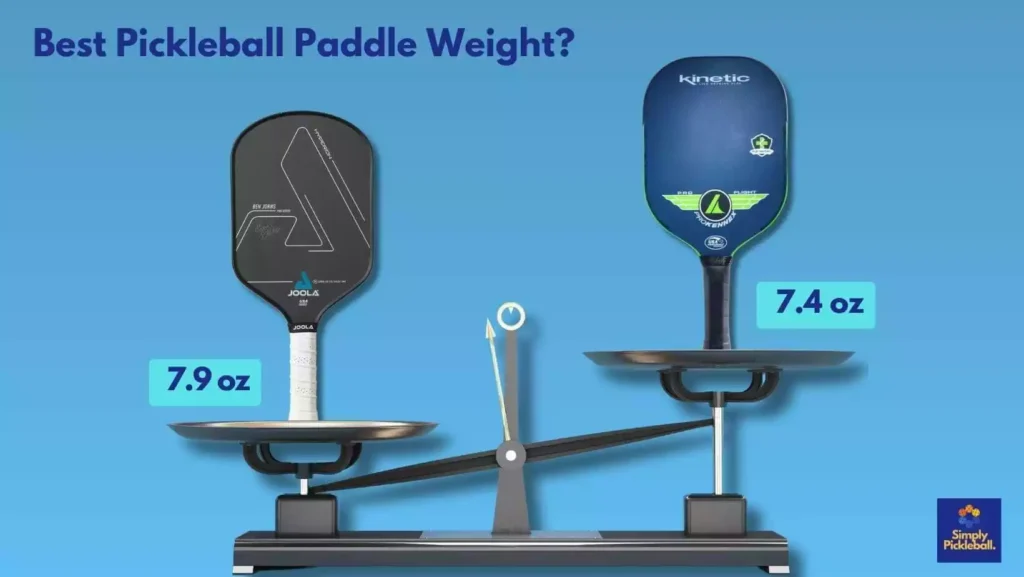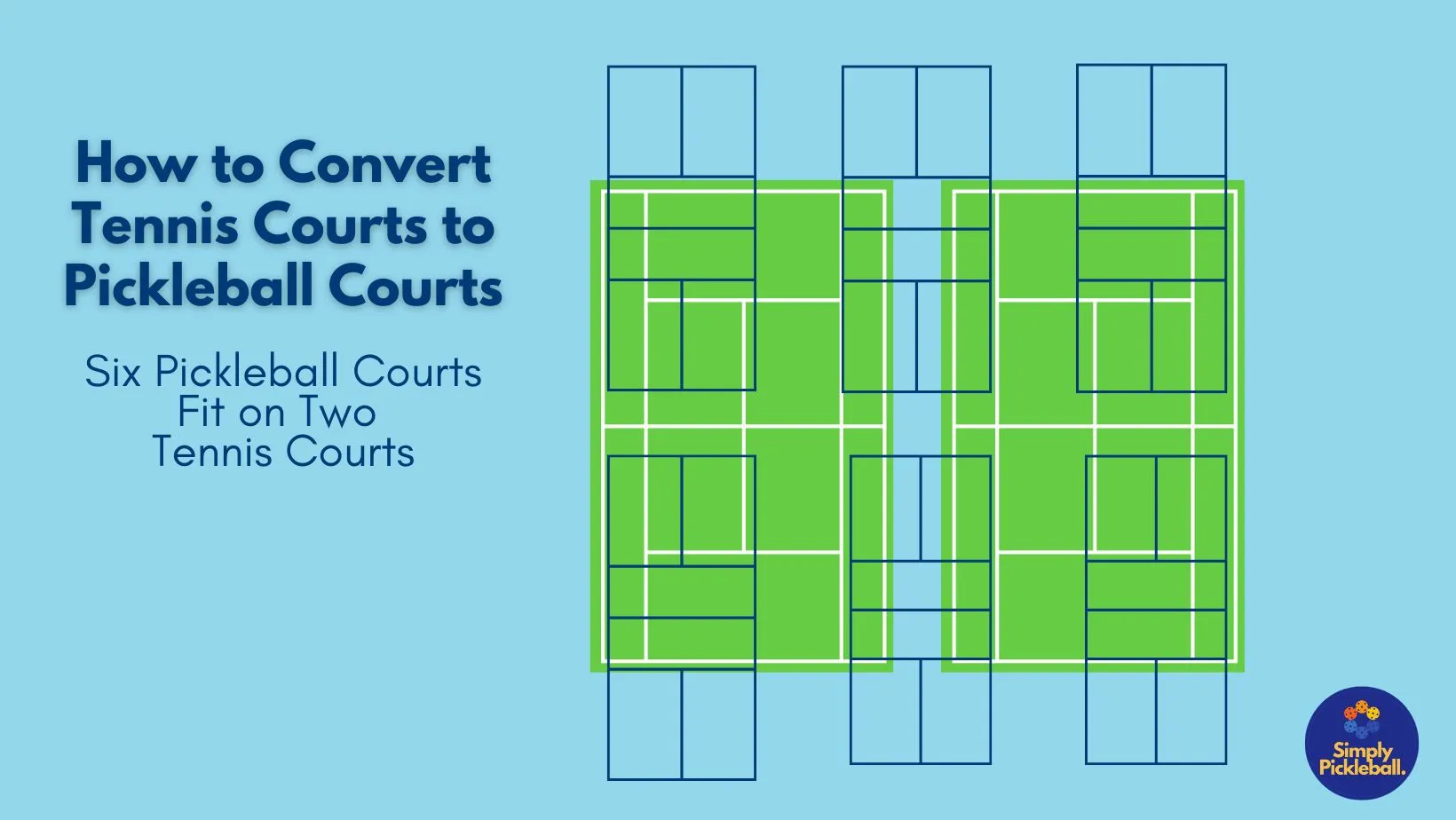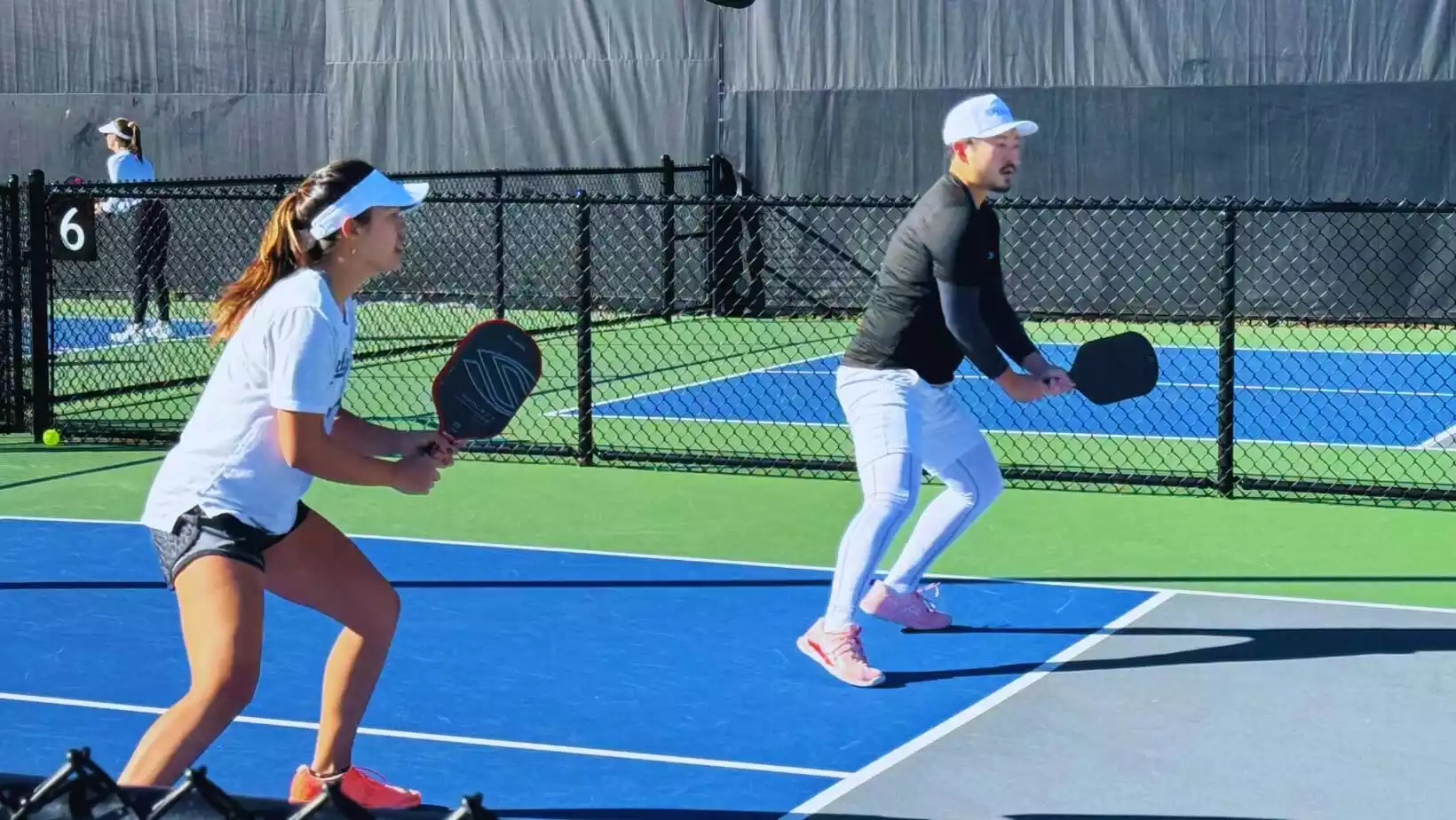The spectrum of pickleball paddle weight varies significantly in the diverse world of pickleball paddles. On one end, we have the feather-light contenders, with weights starting around 6.8 ounces. These lightweight paddles offer unparalleled agility, allowing players to react to the ball and control their shots swiftly. On the other end of the spectrum, we encounter the heavyweight champions, tipping the scales at a minimum of 8.2 ounces. These robust paddles bring power to the player’s game, enabling them to deliver impactful shots and dominate the court.
In this exploration of pickleball paddle weights, we delve into the implications of choosing a lightweight, medium-weight, or heavy paddle, examining how these nuances can impact your gameplay and overall experience on the pickleball court. Whether you’re a finesse player seeking agility or a powerhouse looking for that extra punch, understanding the significance of paddle weight is crucial in elevating your pickleball prowess.
Table of Contents
Key Takeaways
Pickleball paddle weights range from lightweight (6.8oz to 7.5oz), medium weight (7.5oz-8.2oz) to heavyweight (over 8.2oz), affecting gameplay by influencing power, control, speed, and player fatigue.
Choosing the optimal paddle weight depends on a player’s style, experience, physical health, and the paddle material, with each weight category offering a unique balance of playability traits.
Paddle materials like wood, fiberglass, graphite, carbon fiber, and Kevlar each impact the weight and performance characteristics of the paddle, such as control, power, and durability.
Understanding Pickleball Paddle Weight
Pickleball paddle weight significantly influences the game, acting as the unseen power behind each vigorous shot and accurate drop shot. Paddle weights generally fall within the range of 6.8oz to 8.2oz, embracing both midweight and lightweight paddle options favored by most professional pickleball players. Why is weight so critical, and how does it influence your gameplay? We’ll uncover the significance of paddle weight and explore the diverse weight categories, helping you find the right pickleball paddle for your needs.
Importance of Paddle Weight
The weight of a pickleball paddle acts as the car’s engine, driving your shots with the necessary power, speed, and control to hit their target. A heavier paddle provides more power but might compromise on control and agility. On the other hand, a light paddle improves control and accuracy, especially for softer shots such as dinks and drop shots. However, it may not be ideal for players with tendon issues as it can lead to an early onset of arm fatigue.
Moreover, paddle weight can considerably affect physical performance. It’s like lifting weights. A heavier paddle can absorb the shock of a ball more effectively, protecting the player from jarring impact. But just like lifting a weight that’s too heavy, it can contribute to player fatigue and potential injury. On the other hand, a lighter paddle might be more leisurely on the arm, but the lack of weight means it may not absorb shock as effectively, which might aggravate tendon issues.
Weight Categories
Having established the significance of paddle weight, we can now explore the weight categories. Pickleball paddles have three primary weight categories: lightweight, midweight, and heavyweight. Like Goldilocks and the Three Bears, each category has its unique ‘just right’ characteristics, and choosing the right one depends on your playing style, experience level, and physical health.
Paddles classified as lightweight typically weigh between 6.8oz and 7.5oz. This weight range makes them easy to handle and maneuver during paddling activities. They are nimble and allow quick responses, especially for those soft touch shots near the net. However, they might not provide as much power for long shots.
Midweight paddles, also known as midweight or lightweight paddle options, weigh between 7.5 – 8.2 ounces. They balance power and control, making them a great starting point for beginners.
Lastly, heavyweight paddles exceed 8.2oz. These are powerhouses, providing powerful shots, but they might decrease maneuverability and speed.
Factors to Consider When Choosing a Paddle Weight

Selecting the appropriate paddle weight doesn’t follow a one-size-fits-all approach. It’s like choosing the right pair of running shoes. Just as you would consider factors like your foot shape, running style, and terrain, selecting the right paddle weight involves considering factors like your playing style, experience level, and physical health.
We’ll examine each of these factors in more detail.
Playing Style
Your playing style significantly influences the optimal paddle weight for you. If you’re a player who prioritizes agility and quick responses, then a lighter paddle might be your best bet. It offers improved maneuverability, allowing you to react swiftly and efficiently navigate the court. However, you might consider a heavier paddle if power shots are your strong suit. The extra weight can increase the force and power in your shots, giving you an advantage in offensive strategies.
The weight of a pickleball paddle also affects control, influencing swing speed, maneuverability, and overall effectiveness in playing shots. A midweight paddle might be your best choice if you’re more of a defensive player. It provides an optimal balance between paddle speed, control, and power, allowing you to defend effectively against your opponent’s shots and turn the game’s tide in your favor.
Experience Level
Your experience level significantly affects the choice of your paddle weight. A midweight paddle might be your best bet if you’re a beginner. It offers a good balance of speed, control, and power, enhancing the game’s accessibility. Think of it as the training wheels on a bicycle. It gives you the support and balance you need while you’re learning.
On the other hand, if you’re an advanced player, your choice of paddle weight might be influenced by your refined skills and playing style. You might prefer a heavier paddle for power shots or a lighter one for quick responses and soft touch shots. It’s like upgrading your bicycle to a mountain or road bike based on your needs and preferences.
Physical Health and Fitness
Another vital consideration when selecting a paddle weight is your physical health and fitness level. It’s like choosing your workout routine. You wouldn’t want to lift weights that are too heavy or run a marathon without proper training. Similarly, choosing a paddle weight that is too heavy or too light for you can affect your performance and even lead to injuries.
When choosing a paddle, consider the weight:
A heavier paddle might provide more power, but it can also lead to quicker fatigue and increase the risk of strain.
A lighter paddle might be a better choice if you’re prone to injuries or have health concerns. It’s easier to handle and maneuver, reducing the risk of strain and allowing you to play longer.
However, don’t forget that a lighter paddle might not provide as much power. So, it’s all about finding the right balance.
Pros and Cons of Different Pickleball Paddle Weights

Thus, we’ve confirmed that your pickleball paddle’s weight can profoundly influence your game. But like everything else in life, each weight category has its own pros and cons.
We’ll dissect the pros and cons of lightweight, midweight, and heavyweight paddles.
Lightweight Paddles
Lightweight pickleball paddles are the agile gymnasts of the pickleball world. They are nimble, quick, and offer superior maneuverability. The lightweight nature of these paddles allows for quick responses and precise shots, especially near the net.
However, every silver lining has a cloud. While lightweight paddles offer superior agility and control, they may lack the power that heavier paddles can provide. So, while you can maneuver the paddle quickly and precisely, you might find it harder to deliver powerful shots with lighter paddles. It’s the classic trade-off between agility and power.
Midweight Paddles
Now, let’s talk about the midweight paddles. They strike the perfect balance between power and control, making them an excellent choice for many players.
Midweight paddles provide the best of both worlds. They offer enough power to make those long and offensive shots while giving the control you need for precision shots. However, remember that while they provide a balance, they might not excel in any aspect. So, if you’re a player who prioritizes control or power, you might want to consider a lightweight or a heavyweight paddle.
Heavyweight Paddles
Heavyweight pickleball paddles are the powerlifters of the pickleball world. They offer superior power and stability, allowing you to deliver forceful shots that can leave your opponents reeling. If you’re a player who prioritizes power in your gameplay, a heavyweight paddle might be the perfect fit for you.
However, with great power comes great responsibility. While heavyweight paddles can provide powerful shots, they might compromise on agility. The extra weight might also require more maneuvering effort, potentially leading to quicker fatigue. It’s like swinging a heavy baseball bat. It can deliver powerful hits but requires more effort and can affect your speed.
Paddle Materials and Their Impact on Weight
The material used for your pickleball paddle significantly impacts its weight. Think of it as the fabric of your clothes. Just as you would choose a material based on comfort, durability, and the weather, choosing the suitable paddle material involves considering factors like:
weight
power
control
durability
Let’s investigate the various materials employed in pickleball paddles and their effect on their weight.
Wood
Wooden paddles are like the 8 tracks or cassette tapes of the pickleball world. They are durable and affordable, but there is better technology available. They are known for their durability, especially in terms of repeated flex durability compared to composite paddles. Plus, they are generally more cost-effective than paddles made from other materials.
However, wooden paddles tend to be heavier than other materials. The extra weight might provide more power but can also affect your speed and control. Furthermore, the wooden core of these paddles can result in a lack of uniformity, leading to inconsistent hits.
Fiberglass
Fiberglass paddles are like the versatile cotton shirts of the pickleball world. They are lightweight, versatile, and offer a great balance between power and control. The weight of a fiberglass paddle impacts game performance by enhancing maneuverability and control, leading to more precise shots.
However, the lightweight nature of fiberglass paddles might result in reduced stability compared to heavier paddles. The effective mass at the point of impact can affect power, making it harder to deliver powerful shots. So, while a fiberglass paddle might offer superior control and maneuverability, it might not provide as much power.
Graphite
Graphite paddles are like the high-performance sportswear of the pickleball world. They are lightweight, powerful, and provide excellent precision and control. The weight of graphite paddles impacts precision and control, enabling greater maneuverability and facilitating the execution of precision shots with ease.
However, graphite paddles might not provide as much power as heavyweight paddles. So, while they offer superior control and precision, they might lack the power you need for long shots. It’s like wearing a pair of running shoes for a sprint. They offer superior speed and agility, but they might not provide the stability and support you need for the long run.
Carbon Fiber
Carbon fiber paddles are like the high-tech smartwatches of the pickleball world. They are strong, lightweight, and offer high performance and durability. Carbon fiber paddles generally range in weight from 7.2 oz to 8.2 oz, appealing to players who seek a combination of maneuverability and performance in their gear.
But just like a high-tech smartwatch, carbon fiber paddles might have a learning curve. Their distinct features include:
Flexibility
Responsiveness
Precise shots
Pleasant, uniform playing experience
However, this might require some getting used to, especially if you’re transitioning from a paddle made from a different material.
Kevlar
Kevlar paddles are like the bulletproof vests of the pickleball world. They are solid, lightweight, and provide excellent power and control. The distinctive blend of lightweight yet durable Kevlar paddle material enables quicker swings and improved maneuverability, enhancing control and power during gameplay.
However, Kevlar paddles are expensive, just like a bulletproof vest. The elevated price can be attributed to premium materials such as Kevlar, graphite, and fiberglass. These materials, while costly, significantly enhance the paddle’s performance and durability.
Tips for Adjusting to a New Pickleball Paddle Weight

Adapting to a new paddle weight can feel like relearning to ride a bike. Although it may seem daunting initially, appropriate guidance and practice can lead to mastery swiftly.
Here are a few pointers to aid your adjustment to a new paddle weight.
Practice Drills
Practice drills are like the training sessions in your workout routine. They help you get used to the new paddle weight and improve your skills. A simple yet effective drill involves holding the paddle horizontally and bouncing the ball, allowing it to contact the ground before scooping it up again. This drill helps you feel the paddle’s weight and improves your ball control.
If you’re transitioning to a heavier paddle and want to improve your power, you might want to focus on drills that involve power shots. On the other hand, if you’re switching to a lighter paddle, drills that emphasize quick responses and precision shots might be more beneficial.
Gradual Transition
Just like you wouldn’t go from lifting light weights to heavy weights overnight, transitioning to a new paddle weight should be a gradual process. It allows your body to adjust to the new weight and reduces the risk of injuries. You might not perceive a difference in paddle weight until it varies by at least 0.5oz to 1.0oz. Therefore, gradually transitioning to a new weight within this range is advisable.
In addition to practice drills, you can incorporate exercises that enhance strength and control into your workout routine. Some exercises that can improve your strength include:
Squats
Lunges
Push-ups
Kettlebell swings
These exercises can make it easier for you to handle a heavier paddle. On the other hand, agility drills can improve your speed and control. This can help you get used to a lighter paddle.
Summary
In conclusion, the weight of your pickleball paddle plays a crucial role in your game. It affects your power, control, and physical performance. While lightweight paddles offer superior agility and control, they might lack the power that heavier paddles provide. On the other hand, while heavyweight paddles offer superior power, they might compromise on agility. Midweight paddles balance power and control, making them an excellent choice for many players. The material of your paddle also impacts its weight, with materials like wood, fiberglass, graphite, carbon fiber, and Kevlar each offering their unique advantages and disadvantages. Finally, when transitioning to a new paddle weight, remember to take it slow and practice regularly. Happy playing!
Frequently Asked Questions
Is it better to have a lighter or heavier pickleball paddle?
It is better to start with a lighter pickleball paddle as it provides more control and reduces the risk of injury compared to a heavier paddle. Using a heavy paddle can increase the risk of elbow injury and muscle strain.
How do you pick the weight of a pickleball paddle?
Your choice of pickleball paddle weight depends on your fitness level and comfort. A heavier paddle can help you drive the ball but offers less control.
Can you add weight to your pickleball paddle?
Customizing the weight of your pickleball paddle is a common practice among players seeking to optimize their gameplay. This can be achieved by adding lead tape, silicone inserts, or specialized weights to different paddle parts. These adjustments allow players to tailor the paddle’s weight distribution to suit their playing style, whether they prefer a lighter, more agile feel or a heavier, power-oriented performance.
For more information, read our blog on How to Add Lead Tape to Your Pickleball Paddle.
Join thousands of fellow pickleball players from around the world. Subscribe today!








